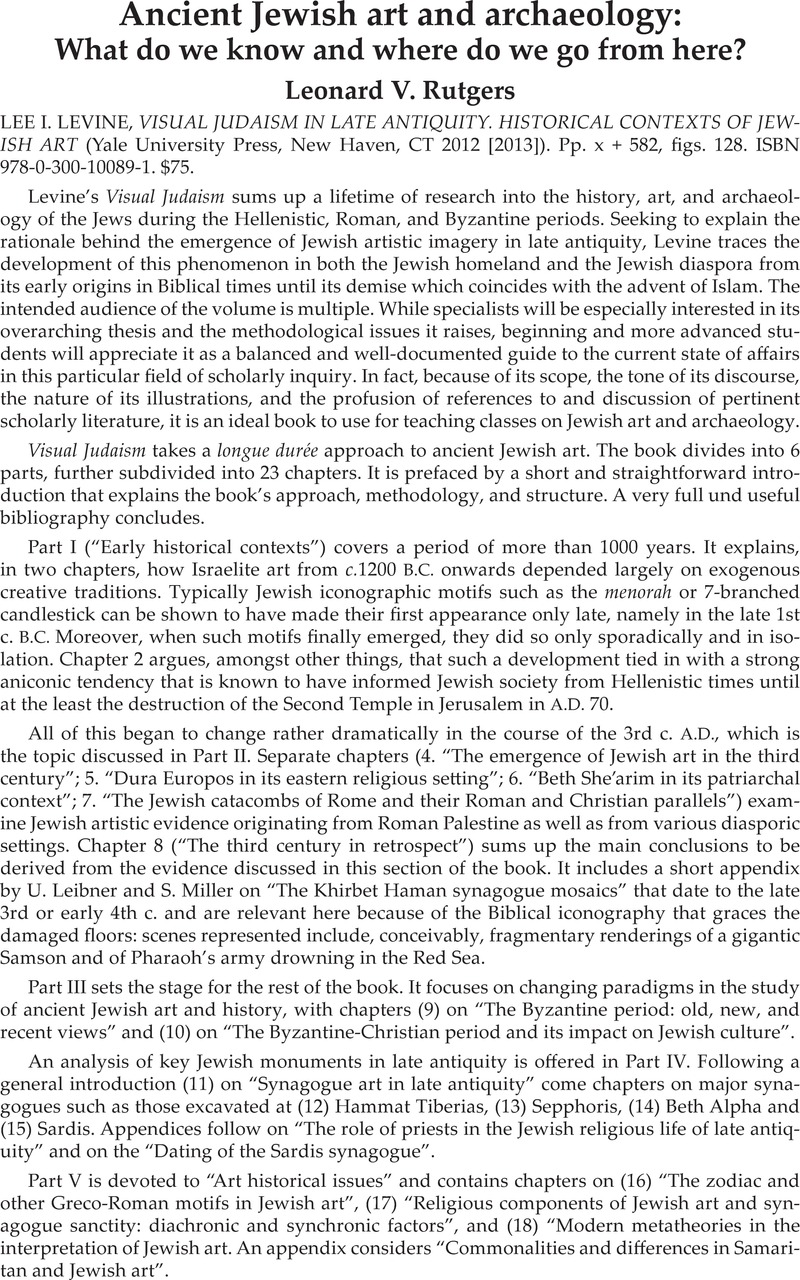No CrossRef data available.
Article contents
Ancient Jewish art and archaeology: What do we know and where do we go from here? - LEE I. LEVINE, VISUAL JUDAISM IN LATE ANTIQUITY. HISTORICAL CONTEXTS OF JEWISH ART (Yale University Press, New Haven, CT 2012 [2013]). Pp. x + 582, figs. 128. ISBN 978-0-300-10089-1. $75.
Published online by Cambridge University Press: 27 November 2014
Abstract

- Type
- Reviews
- Information
- Copyright
- Copyright © Journal of Roman Archaeology L.L.C. 2014
References
1 It must be noted here that Levine does not elaborate systematically on how this process of trickling down worked out in practice or what the aristocracy did to bring it about.
2 Perhaps most prominently by Schwartz, S. Imperialism and Jewish society, 200 B.C.E. to 640 C.E. (Princeton, NJ 2001)Google Scholar, to whose ideas on this Levine, incidentally, does not subscribe (210 n.16).
3 Kranz, P., Jahreszeiten Sarkophage (Berlin 1984) no. 69Google Scholar.
4 Rutgers, L. V. et al., “Sul problema di come datare le catacombe ebraiche di Roma,” BABesch 81 (2006) 172, Table 1, UtC-6721 and 6722Google Scholar.
5 Engemann, J., Deutung und Bedeutung frühchristlicher Bildwerke (Darmstadt 1997)Google Scholar.
6 Hayes, J. W., Late Roman pottery (British School at Rome 1972) 310–15Google Scholar.
7 Avigad, N., Beth Shearim, vol 3. Catacombs 12-33 (Jerusalem 1976) 173–82Google Scholar.
8 The same holds true for the 3rd-c. synagogue of Khirbet Hamam which also contains Biblical imagery, as discussed in the appendix to chapt. 8 of this book.
9 A hypothesis that Levine refutes for lack of evidence. This idea proposed by Weiss, Z., “Between paganism and Judaism: toward an identification of the ‘Dionysiac Building’ residents at Roman Sepphoris,” Cathedra 99 (2001) 7–26 [Hebrew]Google Scholar.
10 Rutgers, L. V., “Ein in situ erhaltenes Sarkophagfragment in der jüdischen Katakombe an der Via Appia,” Journal of Jewish Art 14 (1988) 16–27 Google Scholar. There is nothing Jewish about this sarcophagus: it belongs to the category of sarcophagi with Muses.
11 Koch, G., “Jüdische Sarkophage der Kaiserzeit und der Spätantike,” in Rutgers, L. V. (ed.), What Athens has to do with Jerusalem (Leuven 2002) 196–99Google Scholar.




